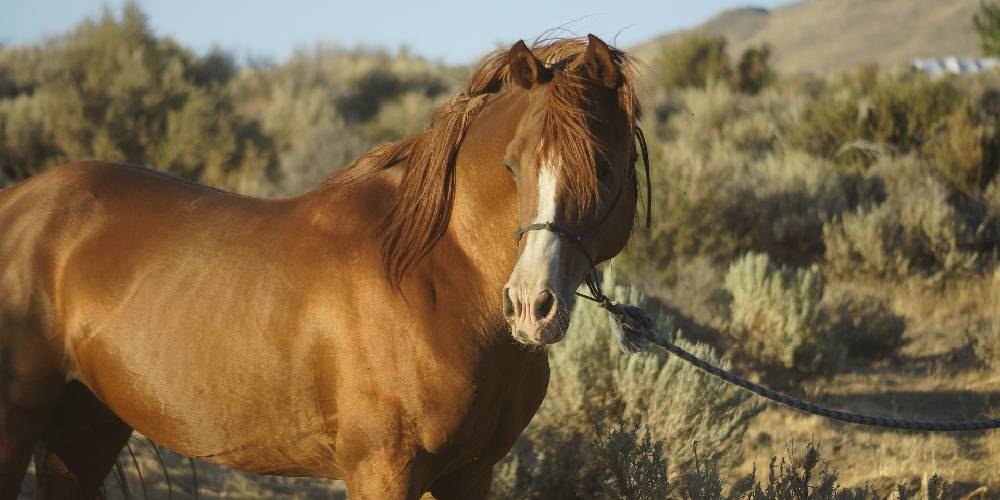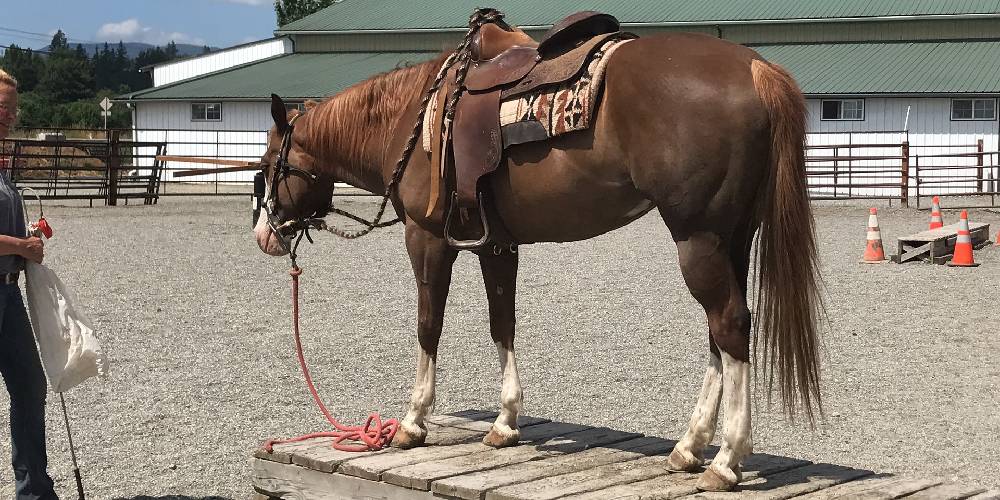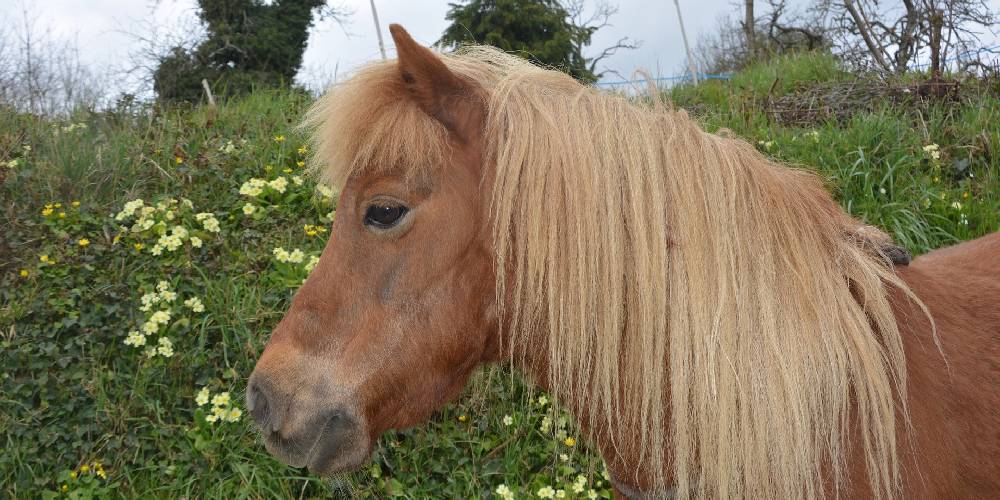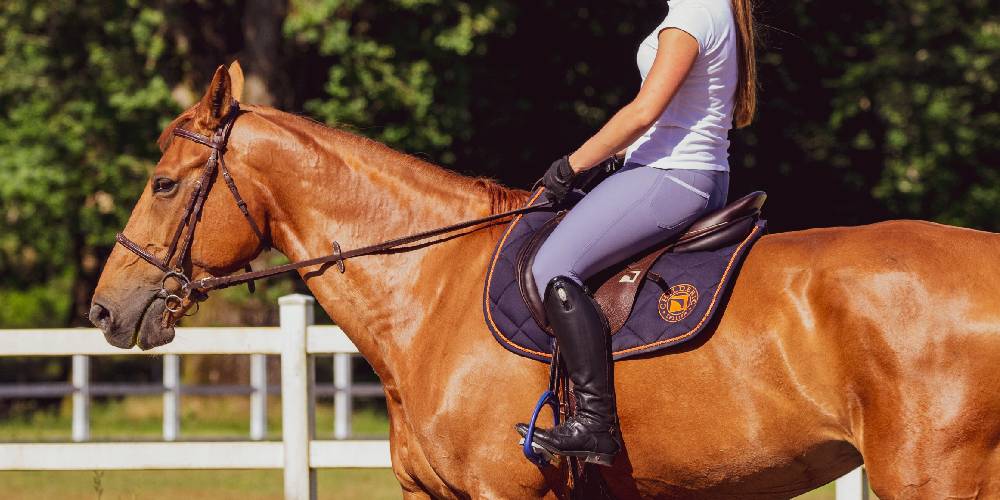There are so many different types of chestnut horses ranging from sorrel to liver chestnut. How can you tell them apart? Can these coat variations be confused with other colors entirely? After doing some background research on this topic, I discovered more about the chestnut horse and what the difference was between different shades of this color.
What Are the Types?
Chestnut horses are horses that range in color from a brassy copper-colored coat, do a deep reddish brown-colored coat. The types of chestnuts include sorrel, liver chestnut, flaxen chestnut, and light chestnut.
What Is Chestnut?
Chestnut is a horse coat color that can vary from dark brown-red in color, to light brassy-copper in color. Chestnut horses typically have a mane and tail that is the same color as their body, but sometimes flaxen (white or beige) is acceptable as a mane and tail color. Chestnut is of the most common horse coat colors and the most boring in my opinion.
These horses have no black on them and can be seen in nearly every breed from Arabians to Quarter Horses, and even Thoroughbreds.
There are so many different variations of this coat color.
What Is Sorrel?

Sorrel is basically a name for a specific shade of chestnut horse. Sorrel horses have a coat color on the lighter spectrum, so basically, sorrels are going to be all the light brassy-copper-colored chestnuts.
This coat color is often mistaken for being a coat color on its own, but it is actually just a variation from the typical chestnut horse.
Sorrel is a name for chestnuts that is usually given to western horses. Many English barns, breeders, and riders won’t consider their horse to be sorrel and prefer to use just chestnut to describe their horse.
What Is A Flaxen Chestnut?

A flaxen chestnut is a chestnut horse of any shade that has a flaxen mane and tail. There are some breeds of horses and ponies that are naturally flaxen horses. A few examples of these horses are the coldblooded Belgian Draft Horse and the Haflinger pony. These breeds only come in chestnut and have a flaxen mane as well. Their bodies are sorrel in color making them flaxen-sorrel chestnuts.
These horses are often confused with palominos due to their white mane and tail. If the horse has a sorrel-colored body it makes them even more difficult to distinguish palominos from flaxen chestnuts.
Chestnut horses can have a flaxen mane no matter how light or how dark they are.
What Is A Light Chestnut?
This is a seldom used term to describe a chestnut horse that is light or pale in color over their entire body. Light chestnuts are basically chestnut horses that have lighter features than a normal chestnut.
These horses might look like a faded orange color normally and can be seen among all breeds that carry the chestnut color.
What Is A Liver Chestnut?

A liver chestnut is a chestnut horse that is really dark in color. This color is a dark reddish brown shade of chestnut and is of the more rare coat color variations seen in horses.
Liver chestnuts are dark all over and usually have the same colored mane and tail as their body.
Norikers are a breed of coldblooded horses from Austria and they are very commonly found as liver chestnuts. It is also not unheard of for them to have flaxen manes as well.
Things People Get Confused With Regarding Chestnut Horses
The Difference Between Palominos and Flaxen Chestnuts

People confuse these horses all the time because of their similar traits of having a white mane and tail. Chestnuts that are sorrel or light chestnut in color may even appear to be a dark palomino, but this is not the case.
Even if a Palomino and a Flaxen chestnut look nearly identical, they are different when looking at genetics.
The main difference between these two coat colors is the fact that Palominos carry a creme gene in their genetics while the chestnut does not.
Fun Fact: Palominos would be chestnut if they didn’t carry a creme gene. Palominos are just chestnut horses that have a creme gene that makes their coat lighter. If a chestnut has two creme genes they would be considered cremello.
The Fact That Sorrel Is Chestnut, Not Its Own Color
People all the time think that sorrel is a color all on its own and isn’t chestnut at all. Other times people think that sorrel is just what western riders, breeders, and trainers call chestnut horses, but this isn’t the case either.
Sorrel is just a color variation of chestnut, not a whole new color entirely. Sorrel horses are just lighter-colored chestnuts with a bright, copper-colored coat.
Sorrel horses are just orange chestnuts!
Are There Chestnut Roans?

Yes, there are chestnut roans. These horses are actually called red roans or strawberry roans.
Sorrel roans are more in pink color than red once completely roaned over so these horses are known as strawberry roans.
Liver chestnuts are redder when they are roaned over so they are known as red roans.
The Roan Horse Association recognizes all chestnut roans as red roans whether or not they have a liver or sorrel base color.
To read more on roans, click here!
Fun Facts About Chestnuts
- The famous Thoroughbred racehorse Secretariat, the winner of the 1973 Triple Crown, was a chestnut
- Palominos are just chestnuts with one creme gene
- Cremellos are just chestnuts with two creme genes
- Chestnut is one of the most common coat colors seen in horses
- Some gray horses are born chestnut before later turning gray.
- Red roan and strawberry roan horses are born chestnut, but later become roan when their white hairs begin to appear
- Chestnut mares have the reputation of being fiery and temperamental
- Paint horses are most commonly seen as a chestnut with white patches
- Appaloosas often are seen as white with chestnut-colored spots, or they are chestnut but have white spots
- Nearly every breed of horse in the world can be found as chestnut
FAQs On Chestnut Horses

Are chestnut mares really as bad as their reputation says they are?
Yes and no. Some chestnut mares are really moody, stubborn, and hard to manage, but this can go for any mare. My friend has a chestnut Thoroughbred mare who is really sweet and kind, but my other friend’s chestnut mare is an absolute monster. It really depends on the horse and has nothing to do with their color!
What is the most expensive chestnut ever sold?
The most expensive chestnut ever sold was a chestnut Selle Francais gelding named Palloubet d’Halong. This horse sold for fifteen million two hundred thousand dollars. This makes him the most expensive chestnut, as well as the most expensive show-jumper in the world.
Secretariat was sold for six million eighty thousand dollars after his racing career ended which was the record at the time.

